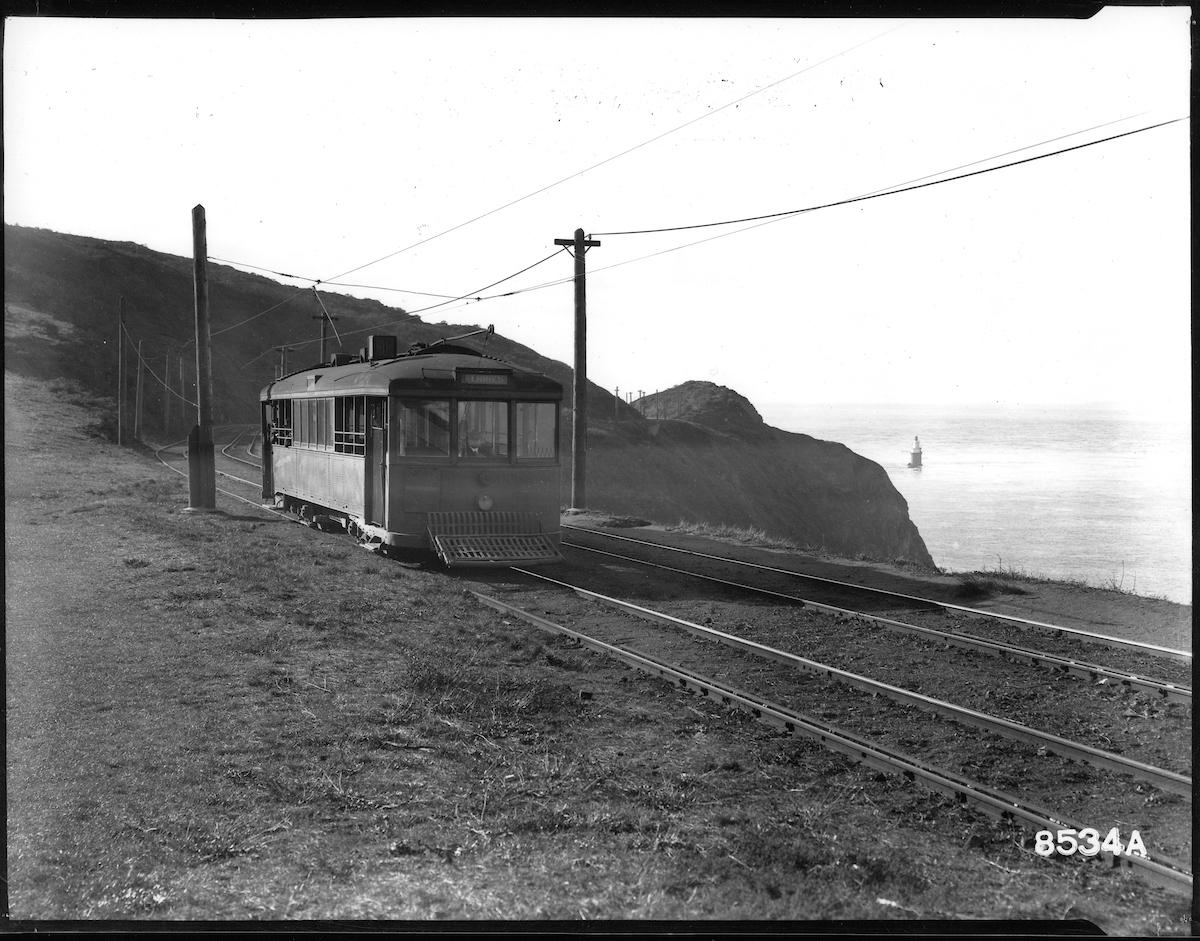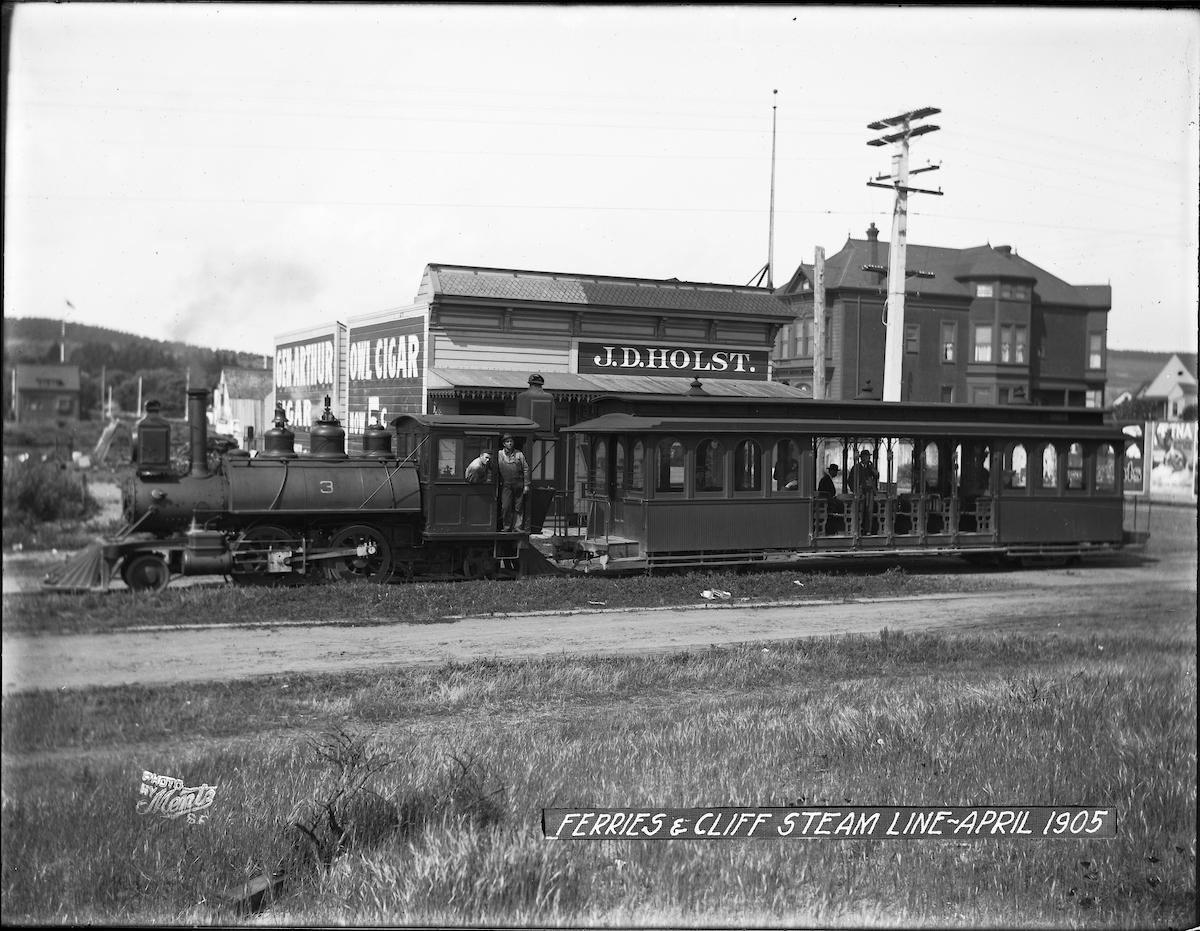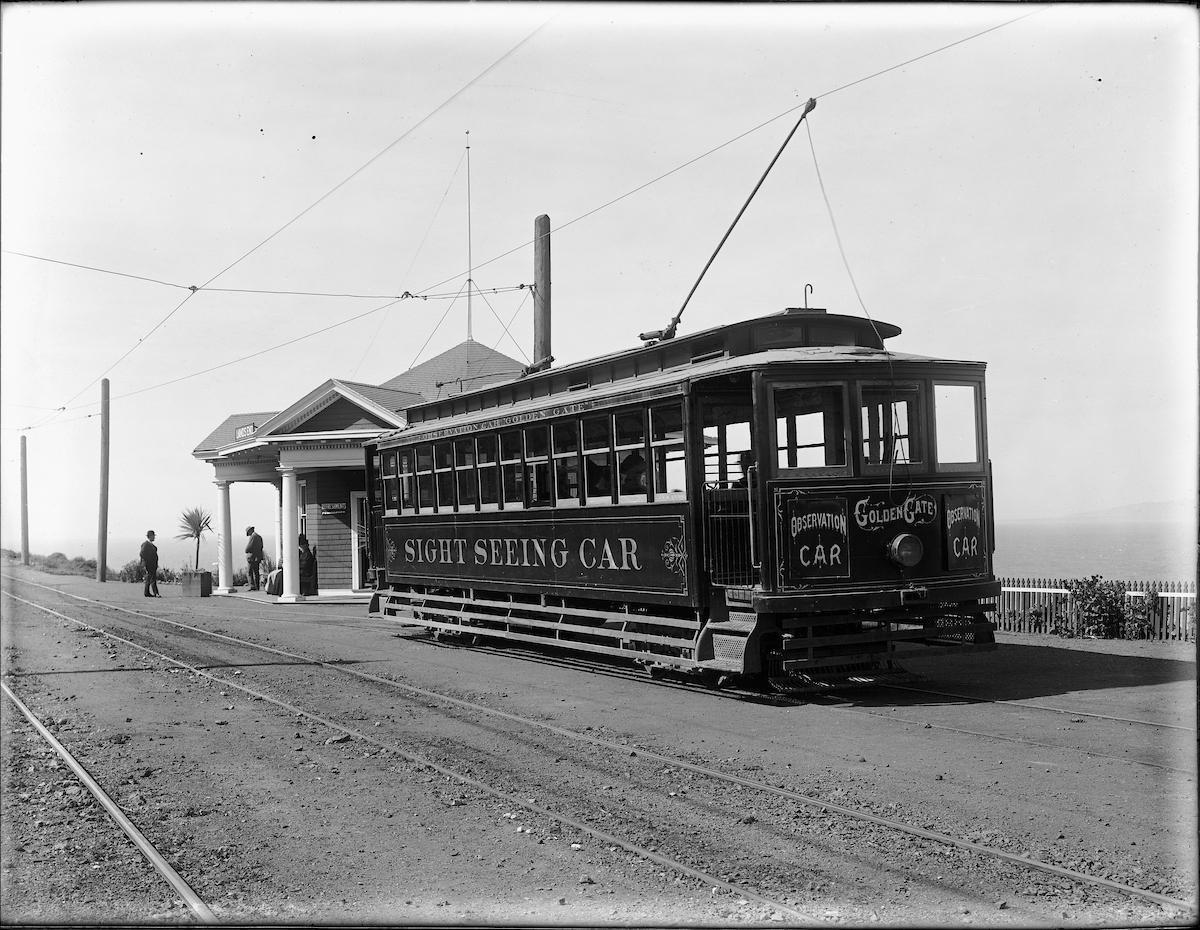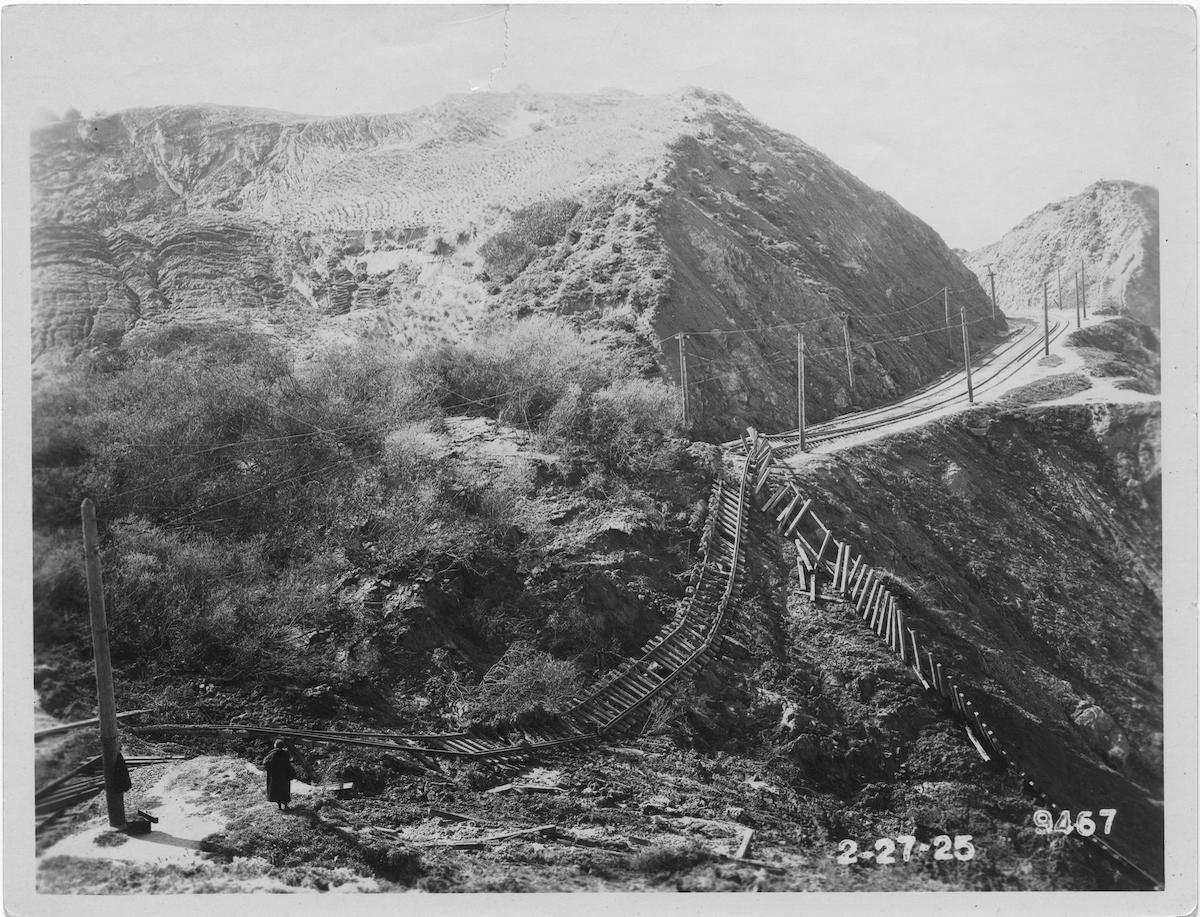Any Muni rider knows, there’s no shortage of beautiful views when you ride our buses, trains and streetcars.
The Powell-Hyde cable cars look out on the Golden Gate Bridge and Alcatraz. The 33 Ashbury/18th Street overlooks downtown from Twin Peaks. Even the flat route of the 12 Folsom follows a lush tree-lined street past Victorian houses in the Mission.
Today, we share what happened to one of the most picturesque routes of them all: a line that led to Land’s End.

This 1923 photo was taken just two years before the permanent closure of San Francisco’s most picturesque transit line.
From the Bay to the Breakers
In July 1889, the Ferries and Cliff Line made its debut on the bluffs of Land’s End. Built by the Ferries and Cliff House Railway Company, it combined two different modes. Cable cars served the inner segment along Clay and Jackson streets. These cars took people from the Ferry Building to Presidio Avenue and California Street. From there, a steam train ran along California Street to 33rd Avenue. The train turned north to a breathtaking path along the cliffs above the Golden Gate.

This 1890 map shows the path of the steam train along Land’s End. Map courtesy David Rumsey Map Collection, David Rumsey Map Center, Stanford Libraries.
At the time the line opened, this area was almost completely inaccessible. The line was popular, ending steps away from Sutro Heights and Baths and the Cliff House.

This 1905 photo of the Ferries and Cliff steam train was taken just one month before the end of steam service.
In 1893, the Ferries and Cliff House Railway merged into the Market Street Railway Company (MSR). By 1902, MSR merged into the United Railroads Company (URR). URR then controlled both the cable and steam operations making up the Ferries and Cliff Line.
Electrification and improvement
In 1905, URR converted the scenic portion of the line from a steam train to a modern electric streetcar. Between January and May, crews worked in the sand dunes and bluffs of Land's End. They demolished a tunnel and dug a new path away from the edge of the cliffs. Next, crews installed two sets of tracks and power lines to improve reliability. From there, they built new stations at the midway point and the terminal on 48th and Point Lobos avenues.

Work crews excavate a tunnel above the ocean in January 1905.
Electric streetcars started running on the new 1 Sutter-California Line beginning May 27, 1905 -- 120 years ago this week. The 1 traveled west to 33rd Avenue on Sutter and California streets. Like the steam train before it, this electric streetcar then turned north onto the rebuilt section around Land’s End.

A group of URR officials and employees pose in front of a special streetcar called “San Francisco” on the opening day of electric service.
The new streetcar line was popular among both locals and visitors. In addition to regular trips on the 1 Sutter-California, people could charter special “observation” cars for private parties.

Pictured here at the Land’s End Station is the sightseeing car “Golden Gate”.
Abandonment
20 years after the new line opened, Mother Nature brought an end to San Francisco's scenic railway. In February 1925, winter rains caused landslides in the sandy, crumbly rock of Land's End. One massive slide destroyed a large section of tracks.

Instead of making expensive repairs, United Railroads decided to close the damaged section. Service shifted to California and Clement Streets instead of the scenic pathway. The terminal moved further west on Point Lobos Avenue to a building above Sutro Baths.
Remnants today
Today, 136 years after the original opening, you can still find remnants of the scenic line. The land where the line ran is now part of Lincoln Park and the Golden Gate National Recreation Area. Discover sections of the railway by walking the Land’s End trail, which follows much the same path.
To visit the site of the original 48th Avenue terminal, take the 38 Geary to 48th Avenue. Walk north on El Camino Del Mar to the intersection with Seal Rock Drive and you'll be in about the same spot.
Across town on the corner of Washington and Mason streets is another remnant of the Ferries and Cliff House Railway. Muni’s Cable Car Division stands in the same spot as the company’s headquarters. On the Washington Street side of the building is a sign spelling out the company name.
Comments are for the English version of this page.